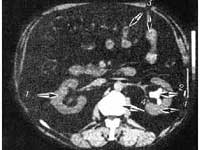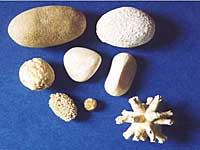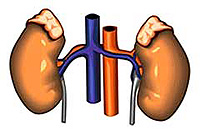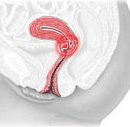Etiology and pathogenesis of urolithiasis have been studied quite detailed. Proved, the disease has a multifactorial nature and a set of certain external and internal factors dictates which types of stones with urolithiasis are formed in each case. Why and how the kidney stones are formed than they differ from each other?
Content
Urolithiasis is classified as a frequent disease, 460 thousand has been found. Russians out of 10 million. Examined. Among those who applied to the urologists, stones in the urinary ways are detected in about 34 cases out of 100, and more often in able-bodied, young women aged 30-50 years. Interestingly, the inhabitants of the southern regions of Russia more often «wear» In the kidneys, urates, and representatives of Moscow, suffering from urolithiasis — Oxalate, compounds of oxalic acid. Why the stones are formed? What happens in urinary organs in certain people, which allows the salts to form crystals and concrections?
A little about etiology and pathogenesis of urolithiasis
 The development of urolithiasis is associated with violation of metabolic processes in the body. Matter Features of human nutrition, lifestyle, drinking mode, age, geographical, climatic, environmental accommodation, professional activities related to diseases and nature of their treatment. The formation of various types of stones at urolithiasis contributes to the hereditary predisposition to exchange violations, the presence of malfunction of urinary tract, impede the movement of urine, chronic infections, diseases of endocrine organs.
The development of urolithiasis is associated with violation of metabolic processes in the body. Matter Features of human nutrition, lifestyle, drinking mode, age, geographical, climatic, environmental accommodation, professional activities related to diseases and nature of their treatment. The formation of various types of stones at urolithiasis contributes to the hereditary predisposition to exchange violations, the presence of malfunction of urinary tract, impede the movement of urine, chronic infections, diseases of endocrine organs.
Contrary to the popular belief that the stones are formed only in the kidney stone formation possible in the bladder, ureters and urethra. In the lower departments of the urinary system, the stones fall from the kidneys.
Although urolithiasis — The general disease of the body, the classification involves the allial and bilateral kidney damage. Stones can be single or multiple values from 1 mm to 10 or more cm. In some cases, councils grow slowly years, in others — We manage to achieve huge sizes in 5-6 months and fill in yourself literally the whole cup of kidney.
Features of etiology and pathogenesis of urolithiasis determine the possibility of recurrence of stone formation, unless otherwise abide by the prevention of stone formation, do not change the lifestyle, nutrition, do not heal the concomitant diseases.
How and what stones are formed?
 The formation of the concrection begins with the formation of its matrix, that is, the foundations, as a rule, it is protein and appears as a result of the violation of metabolic processes, infection or circulatory disorder in the kidney. Violation of urine removal and its delay in the kidney contributes to the development of urolithiasis and the formation of stones from oxalates, urates, phosphates and other insoluble compounds. The fallout of salts in the precipitate becomes possible in the event of a decrease in the amount of colloids, which occurs during the disorders of the urodynamics of blood circulation, as a result of microbial factors.
The formation of the concrection begins with the formation of its matrix, that is, the foundations, as a rule, it is protein and appears as a result of the violation of metabolic processes, infection or circulatory disorder in the kidney. Violation of urine removal and its delay in the kidney contributes to the development of urolithiasis and the formation of stones from oxalates, urates, phosphates and other insoluble compounds. The fallout of salts in the precipitate becomes possible in the event of a decrease in the amount of colloids, which occurs during the disorders of the urodynamics of blood circulation, as a result of microbial factors.
Unable to intervene in etiology and pathogenesis of stone formation, the development of urolithiasis, the kidney continues to work under conditions of reduced blood flow. Uncrolized pieces are rejected, the resulting wounds attract insoluble salts, the most unpleasant among all types of stones with urolithiasis.
Urolithiasis: classification of stones
 Types of urolithiasis stones (urolithiasis), classification, depending on the chemical composition:
Types of urolithiasis stones (urolithiasis), classification, depending on the chemical composition:
- urbites urolithiasis, stones consist of uric acid salts, have high density, smooth surface and yellowish brown;
- Oxalate urolithiasis — The stones are formed by the salts of oxalic acid, dense, have a black and brown color and a rough surface with spikes;
- Phosphate urolithiaz — Stones include calcium phosphoric acid salts, have a grayish-white color and a porous structure;
- Custine stones are hard and smooth;
- Mixed stones consist of two types of salts.
From the chemical composition and shape of the stones depend on how urolithiasis will flow. Oxalates, for example, often cause kidney colic and require diet compliance involving limited use of products containing oxalic acid. The treatment of urolithiasis takes into account the nature of the stones, since their dissolution — This is a chemical process.









